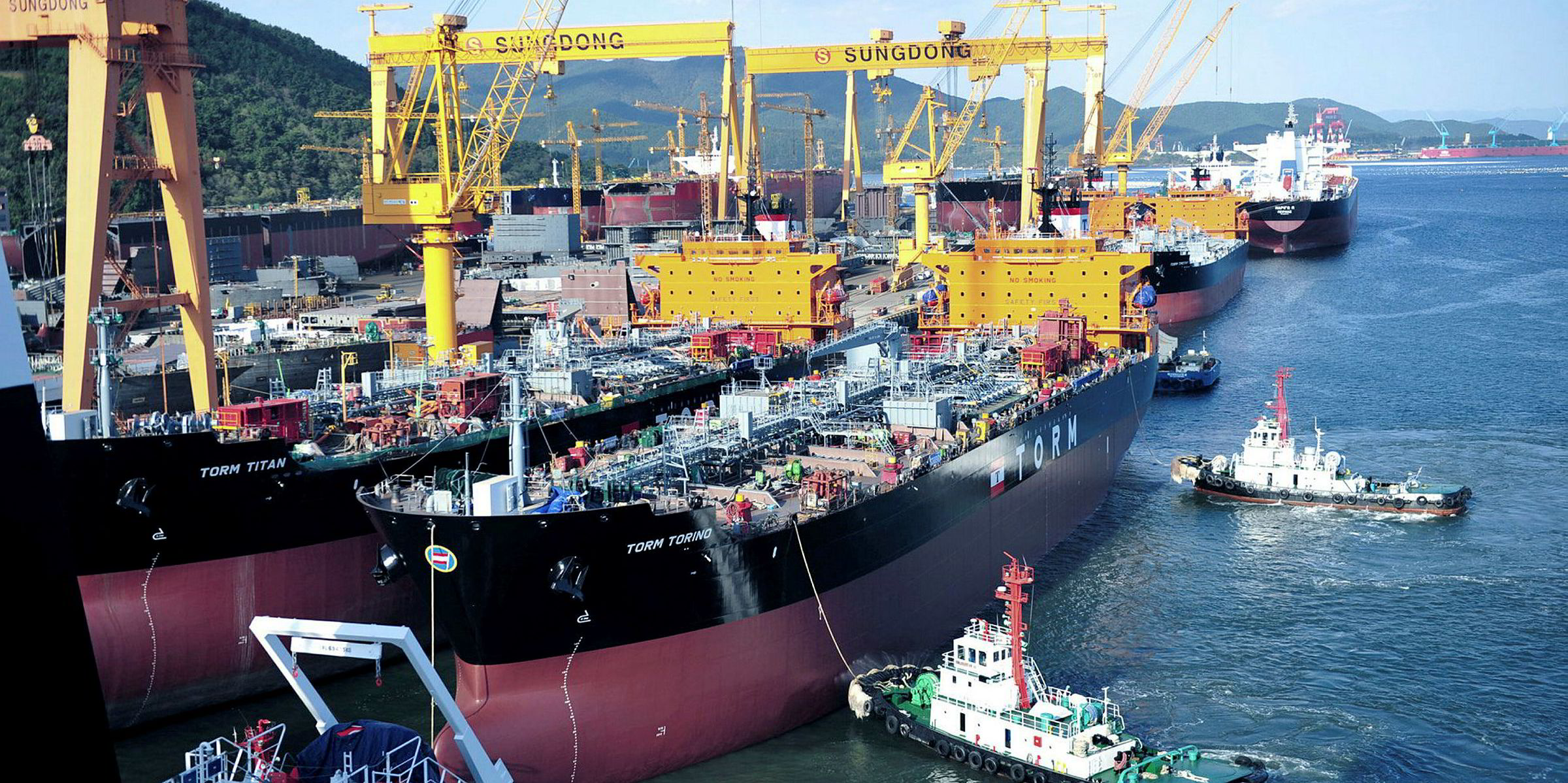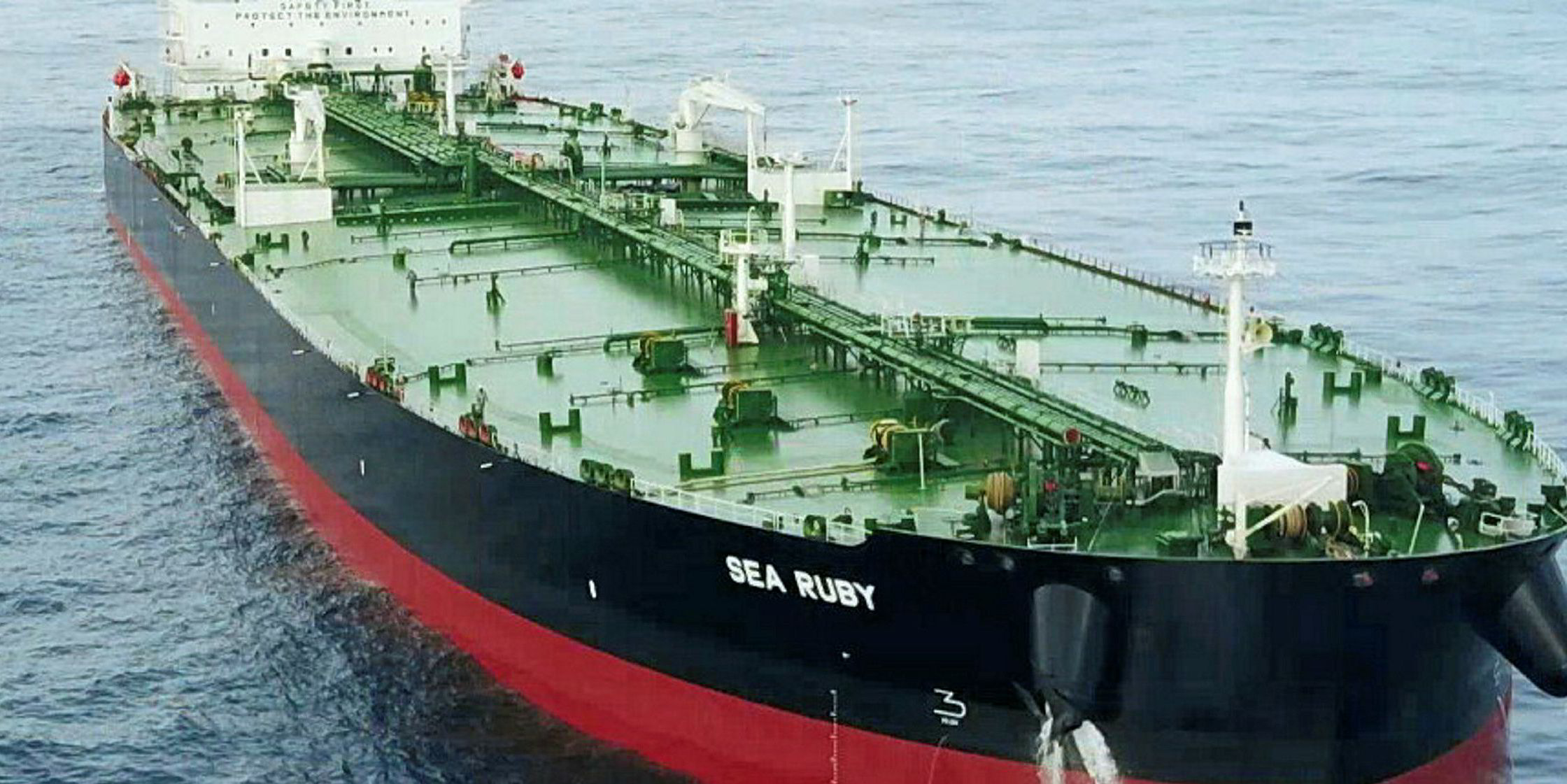South Korea has lost its mantle as the market leader for aframax and LR2 product tanker newbuildings to China, due to the ongoing restructuring of the republic’s shipbuilding industry.
While aframax contracting in general has been sliding over recent years, Chinese yards have been championing the construction of aframax-size tankers such as LR2s since 2017.
South Korea’s demise is being linked to the erosion of its competitive edge on both price and shipbuilding capacity.
Aframax newbuild prices of about $48m are not high enough to convince South Korea’s banks to back domestic shipbuilders, which are under pressure to improve their balance sheets.
Brokers add that their refusal to issue refund guarantees to medium-size shipyards has resulted in the collapse of aframax deals in the country.
As such, they say, many medium-size South Korean yards, particularly aframax specialists, have been forced to close.
“The number of shipyards available in South Korea has reduced and there is less choice available compared with China,” one broker said.
Since 2017, South Korea’s yards have been stepping back from the segment.
Samsung exit
Samsung Heavy Industries has stopped production at its No1 floating dock. Hyundai Heavy Industries closed Gunsan shipyard.
Sungdong Shipbuilding & Marine Engineering has now also shut its doors. While STX Offshore & Shipbuilding has turned its attention to MR tankers and LNG bunker vessels.
Hanjin Heavy Industries’ HHIC-Phil is another South Korean controlled yard that has also exited the aframax market due to financial difficulties.
Only Daehan Shipbuilding and HHI remain active in aframaxes and LR2s.
Newbuilding prices — at around $48m for an aframax — are not high enough to convince banks to back South Korean shipbuilders, which are under pressure to improve their balance sheets
But Daehan has already filled its upcoming delivery slots with suezmax tankers, which are more attractive in terms of price. And HHI is failing to compete with Chinese yards on price.
In part, one broker says, the yards have pulled back from the sector to take advantage of strong demand for LNG newbuildings, where prices are more attractive.
LNG newbuildings
This has led the major South Korean shipyards to put conventional vessels on the “backseat”.
That contrasts strongly with Chinese yards, which brokers say are “aggressive” and very keen to get into the tanker sector that has traditionally been dominated by South Korean shipbuilders.
Brokers cite an improvement in Chinese-built ships and yards that have gained a reputation as “specialists” in the midsize crude and product tanker market: Guangzhou Shipyard International, Dalian Shipbuilding Industry Co and New Times Shipbuilding.
Recent orders from blue-chip shipping companies such as Maersk Tankers, Eastern Pacific Shipping and Navig8 will further lift the reputation of Chinese shipyards, brokers add.
South Korea’s yards are not the first to retrench in the face of competition from China. Japan, once a leading shipbuilder of aframax tankers, has also largely exited the market.
Of Japan’s yards, only Sumitomo Heavy Industries and Namura Shipbuilding are currently active in the segment.
China's dominance
But can China continue to dominate the segment?
Brokers say the move towards more eco-friendly vessels, which require a higher standard of technical capability, might see newbuild prices rise again, bringing both the South Koreans and Japanese back into the market.
South Korean shipyards could even return to the aframax market once the boom in LNG demand has been exhausted, or to take advantage of rising demand for non-conventional aframaxes, such as the ice-class bow-loading vessels ExxonMobil is currently tendering for.
The new Russian Zvezda Shipbuilding Complex project already has made its mark on this sector, with such orders linked to Rosneft, and it could be a future player in the market.





